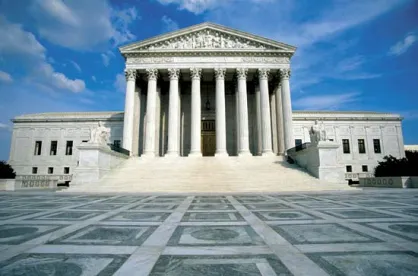On March 1, 2016, the U.S. Supreme Court heard argument on the seemingly simple question of what “actual fraud” means. The Court’s decision will have a significant impact on the reach of the exception to discharge under Section 523(a)(2)(A) of the Bankruptcy Code.
The end result of a “successful” bankruptcy case is a discharge of pre-petition debts. However, the Bankruptcy Code excepts from discharge nineteen categories of claims. Included within this list are claims for “money, property, services or an extension, renewal, or refinancing of credit, to the extent obtained by . . . false pretenses, a false representation, or actual fraud.” See 11 U.S.C. § 523(a)(2)(A). While this language appears simple, a split exists among the Circuit Courts of Appeals as to whether “actual fraud” requires that the debtor make a false representation to a creditor.

The Fifth Circuit Court of Appeals ruled in Husky Int’l Elecs., Inc. v. Ritz (In re Ritz), 787 F.3d 312 (5th Cir. 2015) that Section 523(a)(2)(A) requires the debtor to make a false representation to the creditor seeking the exception to discharge. Conversely, the First and Seventh Circuits held that Section 523(a)(2)(A) is not limited to false representations, but also includes deliberate fraudulent transfer schemes. See Sauer, Inc. v. Lawson (In re Lawson), 791 F.3d 214 (1st Cir. 2015); McClellan v. Cantrell, 217 F.3d 890 (7th Cir. 2000).
In the case argued last week before the Supreme Court, Daniel Ritz, Jr. (“Ritz”), the debtor, was a principal of a company called Chrysalis Manufacturing Corp. (“Chrysalis”). Husky, the creditor seeking the discharge exception, had sold product to Chrysalis, but had not been paid in full. Instead of paying Husky’s claim, Ritz had Chrysalis transfer assets to a number of other entities that he controlled. Husky sued Ritz in state court and sought to hold him personally liable for Chrysalis’s debt. After Ritz filed bankruptcy, Husky sought to have Ritz’s debt to Husky declared non-dischargeable under Section 523(a)(2)(A), alleging that Ritz had engaged in a fraudulent transfer of Chrysalis’s assets.
After holding a trial in February 2011, the Bankruptcy Court found, and the District Court affirmed, that because Ritz never made a false representation, the “actual fraud” exception did not apply. The Fifth Circuit Court also affirmed, ruling that the Husky debt did not fall within Section 523(a)(2)(A)’s exception to discharge because Ritz did not make a misrepresentation, and “a representation is a necessary prerequisite for a showing of ‘actual fraud’ under Section 523(a)(2)(A).”
The issue before the Supreme Court was how broadly Section 523(a)(2)(A) should be read. According to Husky, the inclusion of “actual fraud” in the 1978 amendments to the Bankruptcy Code was meant to expand the scope of the discharge to include acts other than false pretenses or false representations. In contrast, Ritz argued that Section 523(a)(2)(A) has an implied inducement element and only captures a debt for something with which the debtor has induced a creditor to part.
The Supreme Court’s decision in Husky, the first bankruptcy decision in the 2016 Term, is certain to have a dramatic impact on challenges to discharge. Section 523(a)(2)(A) is one of the discharge exceptions most often relied upon by creditors. A decision in favor of Husky will broaden Section 523(a)(2)(A)’s scope and will make it easier for creditors to challenge the discharge of their debts. In contrast, a decision favoring Ritz will result in a narrower Section 523(a)(2)(A) application and will certainly make it more difficult for creditors to enforce their claims against the debtor. Based on the Justices’ questions at oral arguments, many experts are predicting that the Court will rule that Section 523(a)(2)(A) should be read narrowly to only apply in the case of a false representation. Of course, prognosticating the Supreme Court rulings is an inexact science, at best. We will update our readers when the Court’s decision, expected later this year, is issued.



 />i
/>i
